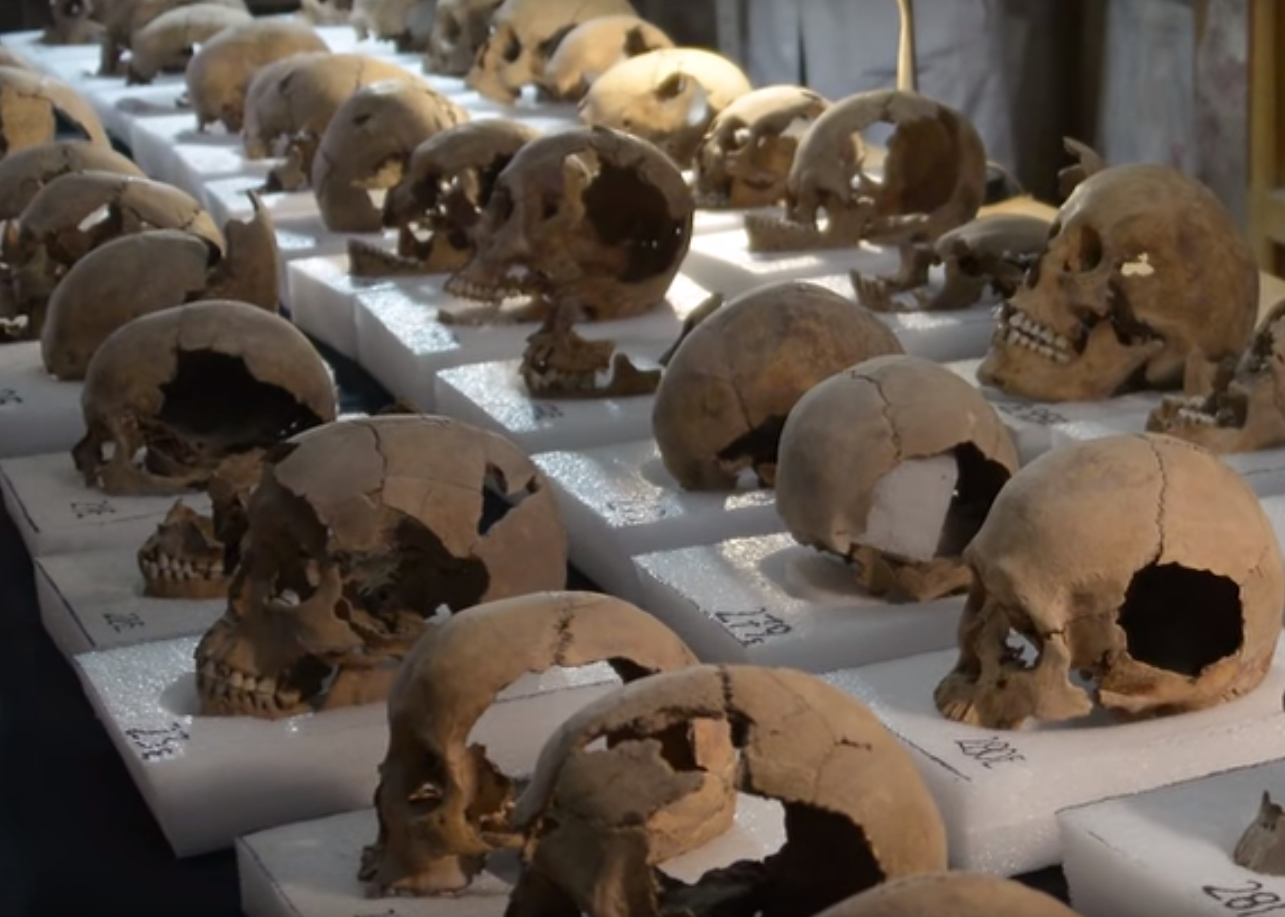Discovery of hundreds of human sacrifice skulls uncovers secrets of ancient Aztec city
Archaeologists hope to learn more about where the slaughtered captives came from

Your support helps us to tell the story
From reproductive rights to climate change to Big Tech, The Independent is on the ground when the story is developing. Whether it's investigating the financials of Elon Musk's pro-Trump PAC or producing our latest documentary, 'The A Word', which shines a light on the American women fighting for reproductive rights, we know how important it is to parse out the facts from the messaging.
At such a critical moment in US history, we need reporters on the ground. Your donation allows us to keep sending journalists to speak to both sides of the story.
The Independent is trusted by Americans across the entire political spectrum. And unlike many other quality news outlets, we choose not to lock Americans out of our reporting and analysis with paywalls. We believe quality journalism should be available to everyone, paid for by those who can afford it.
Your support makes all the difference.Hundreds of skulls discovered buried beneath the streets of Mexico City are revealing chilling details about Aztec human sacrifices.
In the 16th century, Spanish conquistadors wrote of an enormous rack of skulls – called the tzompantli – in the ancient city of Tenochtitlan. Despite the written record, modern historians continued to doubt its existence.
But since 2015, archaeologists have been excavating remains of the tzompantli, and a small tower made of skulls next to it, beneath a colonial-era house north of Mexico City’s cathedral, Science reports.
Before conquistadors destroyed the site in 1521, sacrificial humans were regularly taken to the city’s Templo Mayor (Great Temple), where priests sliced into their chests and removed the still-beating heart.
The priests then laid the body face up and, using blades sharper than modern-day surgical steel, decapitated the body with a cut between two vertebrae in the neck.
They cut away the skin and muscles of the face, reducing it to just a skull, before carving holes in both sides and slipping it onto a wooden post holding other skulls prepared in the same way.
These lengths of skulls ultimately formed part of the tzompantli, a giant rack of row upon row of skulls, measuring 35m long, 14m wide and 4m high.
After months exposed to the elements, the skulls on the tzompantli would begin to fall apart, at which point the priests would remove them and turn them into masks, or combine them with mortar to be added to two towers flanking the tzompantli.
The Aztecs thought human sacrifices would feed the gods and ensure the future existence of the world.
Archaeologists found the tzompantli after digging around 20 test pits, eventually uncovering the basalt slabs of a Mexica-period floor. They began to find hundreds of skulls and skull fragments, before finding the post holes for the rack, allowing them to work out the size of the structure.
Now, archaeologists at Mexico’s National Institute of Anthropology and History estimate there were several thousand skulls on display at any one time.
By studying the remains in detail they hope to learn more about the Mexica peoples’ rituals and where the humans who were sacrificed came from.
“It’s an amazing thing and just the kind of discovery many of us had hoped for,” said John Verano, a bioarchaeologist who studies human sacrifice at Tulane University in New Orleans.
Join our commenting forum
Join thought-provoking conversations, follow other Independent readers and see their replies
Comments